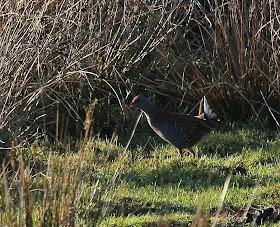
A rare moment of blue skies! By migrating south to Portugal, we found we had exhanged snow for rain. Only two days out of eight were rainfree during our short visit.

Lesser Black-backed Gull. This was a family holiday rather than a birding trip, so most of my pics were taken near where we were staying, in Olhos De Agua, just outside Albufeira.







A selection of Mediterranean Gulls. 'Med Gulls' were at times the commonest gull around, and on other days completely absent.

One of many sea stacks just offshore, beloved of cormorants as roosting and drying out places.

A subadult Great Cormorant.
We paid a short visit to the A Rocha field studies centre where we were treated to warm Portuguese hospitality by the couple who run the centre, Marcial and Paula. We also drove down to the marvellous Alvor Estuary nearby, though sadly the weather was awful!


A group of 17 wintering Greater Flamingos was an incongruous sight!

One of several Common Stonechats feeding along the edge of the saltmarsh.

And a Common (Greater) Ringed Plover feeding on the estuary side of the sea wall.


Crested Larks were numerous in the fields were cattle were grazing.

As were Western Cattle Egrets - looking much smaller-billed than their eastern counterparts.

A Black-winged Stilt (a male presumably) with an exceptional amount of black on the head and neck.







































